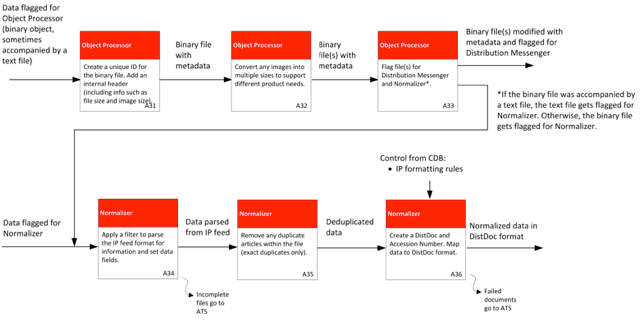ECM Solution Recommendation for a Transit Authority
The Greater Cleveland Regional Transit Authority, the largest provider of public transportation within the state of Ohio, was looking for an enterprise content management (ECM) solution that would streamline its processes to permit more timely and comprehensive compliance with public records requests and electronic discovery obligations, and to take better advantage of the operational value of its data, which was becoming increasingly difficult to manage, find, search and produce.
Iknow’s project approach involved five workstreams.
1. Baseline Assessment. The purpose of the baseline assessment was to lay out GCRTA’s current state of capabilities, practices and procedures as it relates to enterprise content management. To effectively develop this assessment, Iknow conducted interviews with executives, as well as IT, security systems, records management staff. The work was supplemented with documents provided by GCRTA and external data sources as well as Iknow proprietary data based on over 200 client engagements in multiple industries.
Several key themes emerged from the analysis.
- There exists a deep-rooted P2P2C (People-to-People-to-Content) culture. If someone wants to find out information at the organization, the default method is to reach out to a colleague who might know where the information is found. This model of knowledge sharing places a premium on individuals (and the information they have access to) rather than technology (and the information it can access).
- Structured training on software and systems is limited. Many of GCRTA’s system and software tools are not being used to their full capabilities. A principal reason for this is that employees typically do not receive formal, structured training on the products. Most of the employee training is OTS - over-the-shoulder - where individuals learn while they use the software/ systems, focusing on the immediate tasks at hand.
- Process governance, documentation and standardization is inconsistent across GCRTA. Although processes exist at all levels of the organization and range from simple and linear to complex and multi-department, there is limited oversight, governance and standardization for these processes. There exist no best practices process templates or process control documents.
- The GCRTA is largely a “paper-based” organization. A large number of records at GCRTA are stored on paper. Reliance on paper-based records generally occurs for one of three reasons: (1) technology; (2) inertia; or (3) cost.
- The effective application of records management policies and procedures are uneven. The GCRTA has a widespread “save it” mentality – an inherent bias towards keeping data and records beyond their destruction dates. The “save it” mentality is allowed to continue because there is a loose governance structure and there is not a mechanism in place for policy enforcement.
- No legacy ECM systems exist. GCRTA has not implemented any enterprise-wide applications that provide core ECM functionality. With no exiting ECM systems in place, there are no issues associated with legacy system migration, consolidation or sunsetting.
2. Future-State Vision. The purpose of the Future State vision workstream was to provide insights as to what benefits GCRTA could potentially realize through the implementation and deployment of an enterprise-wide ECM solution. Iknow reviewed more than 170 case studies from many of the leading ECM product vendors. These case studies described ECM implementations at organizations in the public sector, private sector, and nonprofit/NGOs. The private sector organizations covered almost every industry. The organizations were drawn from countries around the world; sizes ranged from mid-sized companies to global corporations. Iknow selected the best case study in each of eight areas that highlighted a key ECM functionality relevant to GCRTA and compiled them into a report.
3. Requirements Collection. The purpose of this workstream was to understand the business and technical requirements associated with the ECM solution. Iknow conducted interviews with GCRTA executives to understand the business and technical requirements for the new ECM solution. Based on our analysis of the information discussed during the executive interviews, Iknow ranked the types of ECM functionality based on our assessment of relative importance. Next, working with the ECM Steering Committee, a numerical set of weightings were developed that reflected the importance of the desired ECM functionalities to the GCRTA. Iknow also spoke with the GCRTA IT Team to understand the current and future technical environment and its implications for the new ECM solution.
4. Content Audit. The purpose of this workstream was to provide a comprehensive inventory of GCRTA documents and files (i.e., content) that are both paper based and electronic. Iknow looked at both structured and unstructured data. Iknow looked at over 3.5 TB of data stored in over 300,000 directories. The key deliverable was an analysis of where GCRTA content is stored and how the data is likely to grow over time.
5. Solution Evaluation. Iknow reviewed over 400 commercial, off-the-shelf (COTS) and open source products. After an initial screening, in which Iknow ascertained the stability of the company (looking at, for example, pending or recent M&A activity, presence in the United States, suitable product documentation in the English language), Iknow applied detailed screening criteria based on business and technical requirements. These requirements were established in consultation with the ECM Steering Committee and the IT Department. This resulted in a list of about 30 vendors.
Next, Iknow analyzed available pricing data from GSA Advantage (the federal government’s pricing catalog), Iknow’s proprietary database and from Iknow’s FOIA (Freedom of Information Act) requests for similar ECM product procurements. Finally, Iknow conducted in-depth conversations, product demonstration, benchmark testing and further product evaluations to ultimately narrow the list down to twelve potential solutions.
Iknow created an evaluation spreadsheet that looked at a number of criteria and weightings and ultimately determined that the software package that best suited GCRTA’s requirements was Alfresco’s Digital Business Platform.
Iknow identified many areas where ECM could provide significant and lasting benefits. To capture these benefits, Iknow recommended that the GCRTA embark on a three-year program to fully implement an enterprise-wide ECM system. GCRTA included ECM implementation in its 2019 budget.

